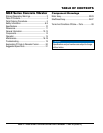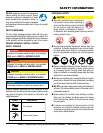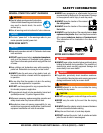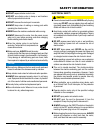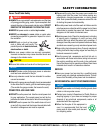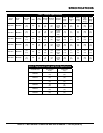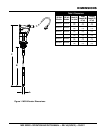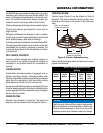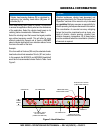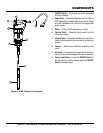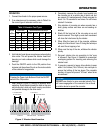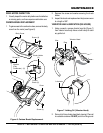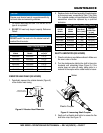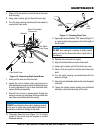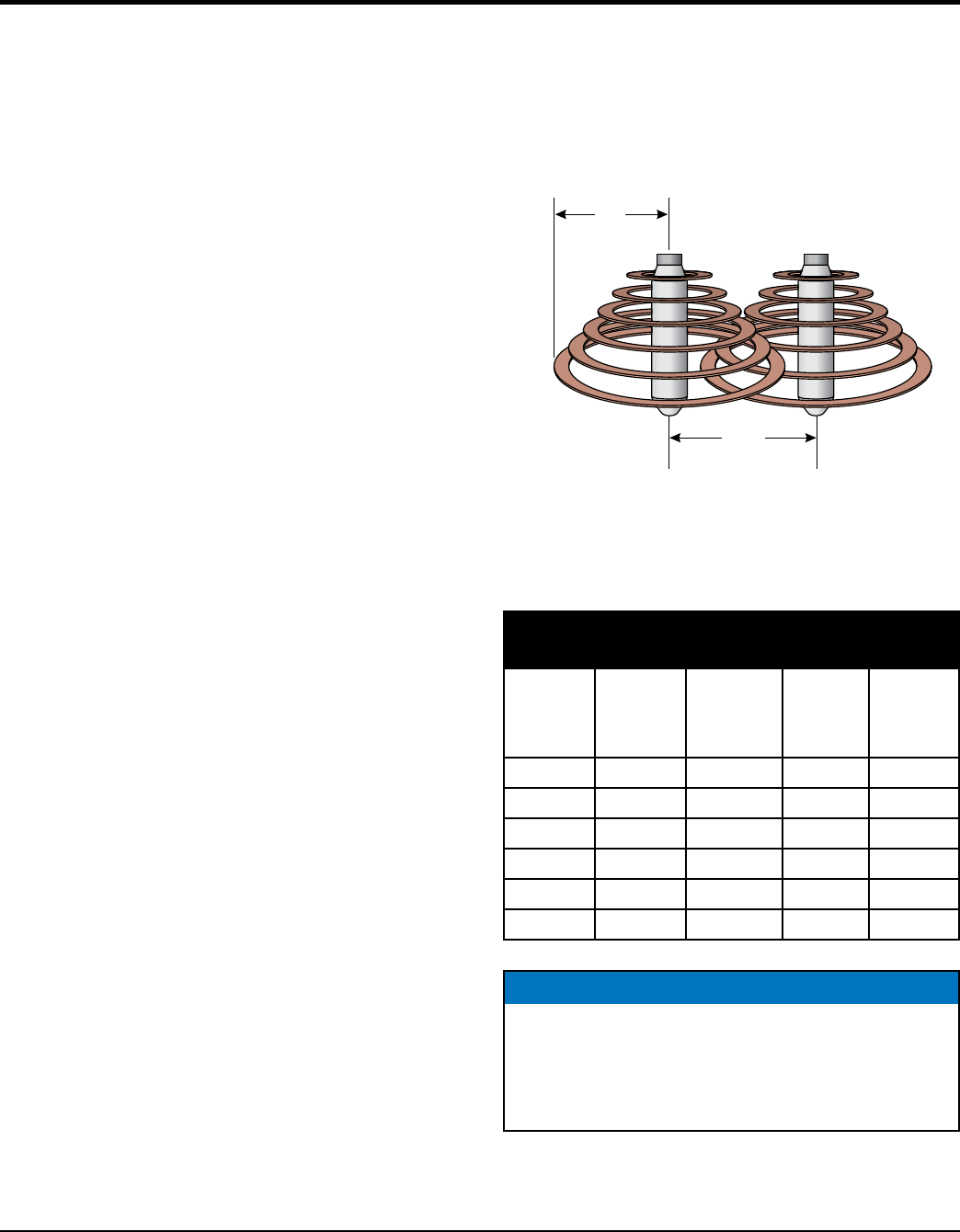
PAGE 12 — MGX SERIES • OPERATION AND PARTS MANUAL — REV. #0 (03/26/12)
GENERAL INFORMATION
The MGX Vibrator has a double-insulated motor (no ground
necessary) with advanced and user-friendly design. The
motor is lightweight and durable with an aluminum motor
case. The frontend closed-motor design prevents any
invasion of mortar and foreign material from the front.
Vibration-dampening handle grip reduces operator fatigue.
Original cord protector gives flexibility to input cord for
longer cord life.
Multiquip's shaft/heads are designed to work in medium
to high slump concrete. Typical applications include small
pours, slabs driveways, stem walls and footings.
A vibrating steel head is attached to one end of the flexshaft.
This head generates vibration via an eccentric rotator that
consolidates the concrete by removing air pockets. The
round head design allows for the transmission of vibration
in all directions.
WHY VIBRATE CONCRETE
To ensure optimum strength and durability, vibration of
fresh concrete is an important requirement. Vibration or
compaction is the principal method for consolidation of
concrete.
CONSOLIDATION
Consolidation eliminates pockets of aggregate and air
bubbles maximizing strength, eliminating surface voids.
Vibrators consolidate concrete by transmitting shock waves
which allow the aggregate to float freely while pushing
lighter trapped air up and out of the concrete mix.
A properly consolidated concrete pour will display a thin line
of mortar appearing along the form near the vibrator and the
coarse aggregate has been dispersed evenly throughout
the pour and is not visible.
VIBRATION TIME
Vibration time depends on frequency. The higher the
frequency, the less vibration time is required for the job.
VIBRATION RANGE
Vibration range (Figure 2) can be defined as "Area of
Influence". This area of influence (vibrating radius) is the
distance from the center of the vibrator to the outer most
edge.
Figure 2. Vibrator Radius/Spacing
Table 4 shows the vibration radius and spacing for a given
vibrator head diameter.
R
AREA OF INFLUENCE
(VIBRATING RADIUS)
VIBRATOR HEAD
INSERTION SPACING
D
Table 4. Vibrating Radius/Insertion
Spacing
120 Volt
Models
240 Volt
Models
HeadDia.
in. (mm)#
Vibration
Radius
(R) in.
(mm)
Vibrator
Spacing
(D) in.
(mm)
MGX12325 MGX22325
.9 (23) 4 (102) 6 (152)
MGX12810 MGX22810
1.1 (28) 5.5 (140) 8.25 (210)
MGX12825 MGX22825
1.1 (28) 5.5 (140) 8.25 (210)
MGX13225 MGX23225
1.25 (32) 8 (203) 12 (305)
MGX13810 MGX23810
1.5 (38) 12 (305) 18 (427)
MGX13825 MGX23825
1.5 (38) 12 (305) 18 (427)
NOTICE
Radius (area of influence R) and vibrator head spacing
(D) are expressed in inches/millimeters. Radius and
distance values expressed in Table 4 are only to be
used as a general guide. Values are subject to change.



